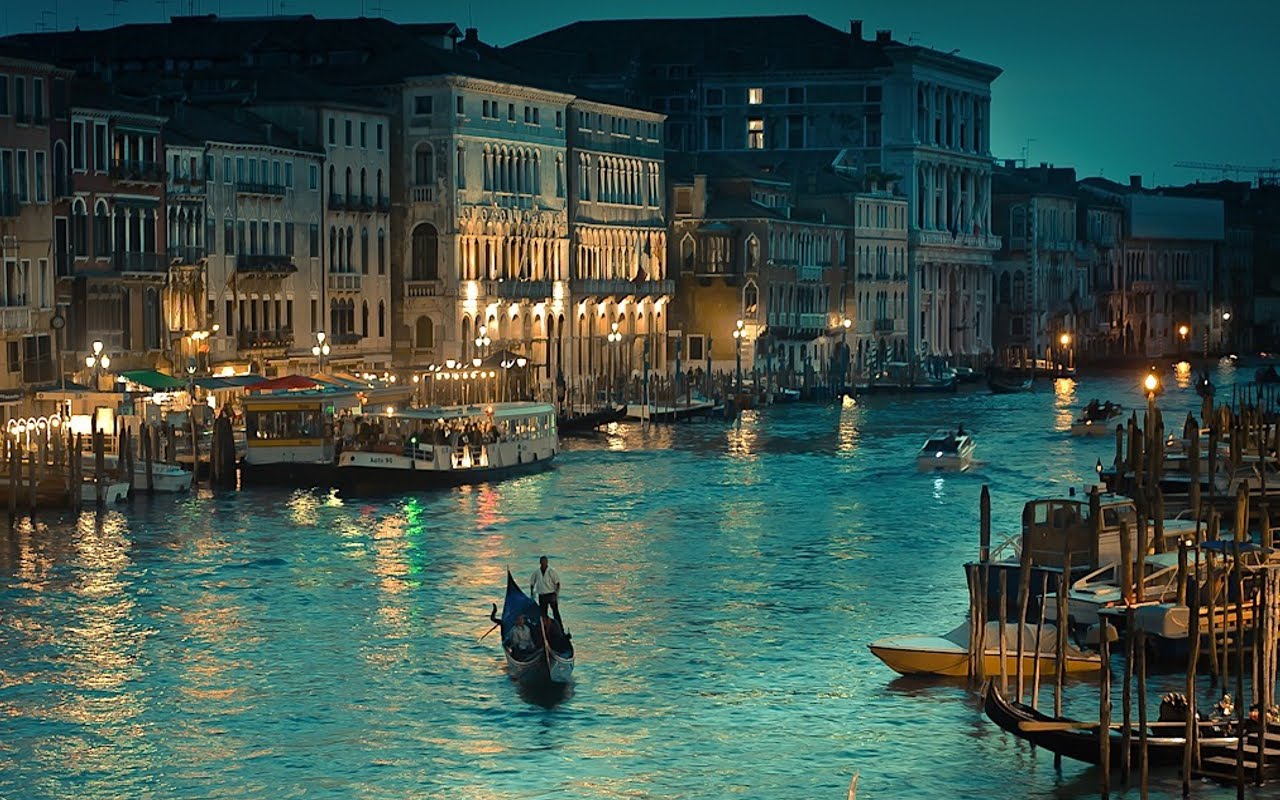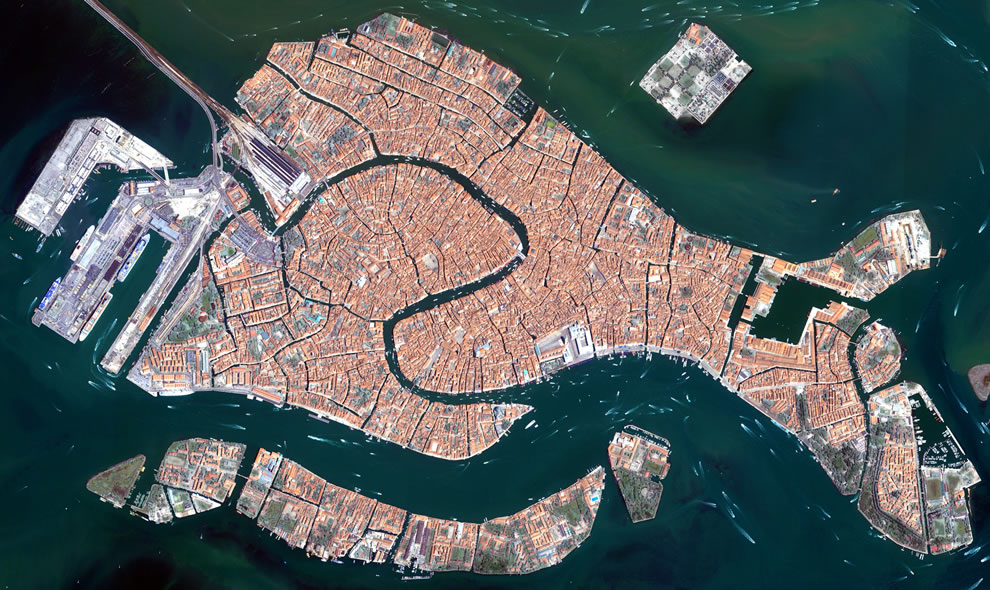
THE CITY IN THE SEA.
ABOUT four hundred fifty years after Christ, the people living in Venetia, a province in the northern part of Italy, were so harassed by their enemies from the north, that they fled from their country and took refuge on a large group of islands in the Adriatic Sea, a few miles from the shore. There they continued to dwell, and in course of time built on these islands the magnificent city of Venice. These islands were originally about eighty in number, but have since been cut through by canals until there are now some one hundred fourteen of them. They lie so close together that the channels-between, form, as it were, streets of water, so that the people go about the city in boats instead of carriages. The city is divided into two parts by what is called the Grand Canal, which is two miles long and from 160 to 230 feet broad, and passes through the city in the form of the letter S.
The smaller canals are from eight to twenty feet in width.
The houses are built so close to the water that their foundation walls help to form the sides of the canals, and the boats can come up to the very doors. The houses are built of stone, and are three or four stories high. The first story, which is only two or three feet above the surface of the water, is used as a cellar, while the people live in the stories above. The finest houses and many palaces and churches are built along the Grand Canal. Many of these grand palaces, once the houses of proud old families, are now used as hotels or places of business. The houses of Venice are very substantially built, and though there is scarcely one that has stood less than three hundred years, they still look as though they might stand for hundreds of years to come.
The boats in which the people go about the city are called gondolas, and the men who paddle them around, gondoliers. If you were to go to Venice, instead, of being taken from the depot in a cab or
hack, a, gondola would meet you there, and take you to any place in the city at the rate of five cents an hour. The gondolas are by an ancient law of the city all painted black, and are long and narrow, with a little cabin in the center large enough to hold four passengers. The gondolier stands up at the front of the boat while paddling, and entertains his passengers by telling them stories about the sights they pass, and by singing them songs in his native language.
You must not get the idea, however, that one cannot go about the city of Venice except by water. There are many narrow streets on the islands, which cross the canals by arched bridges. Of course there are some houses, which face these inland streets, but it is thought much nicer to live in houses that face the water. The Grand Canal is crossed by only three bridges. One of these, the Rialto, is much the finest. It is almost as wide as it is long, and is divided into five strips, or sections; the two outside ones are occupied by shops, and three are left for footways. There is no need for driveways; for there is not a horse in all Venice, except the four bronze ones in St. Mark's Square. The principal gateway of the city is guarded by two huge marble statues of a winged-lion, which was the emblem of the ancient Republic of Venice.
St. Mark's Square is the finest portion of the city. This square is an open court 540 feet long by 246 wide, and is paved with smooth blocks of granite. It is surrounded by magnificent buildings of white marble. One side is occupied by St. Mark's Cathedral, the finest church edifice in Venice. It resembles in many respects the church of St. Sophia, as built by Justinian at Constantinople.
In one corner stands a clock-tower, three hundred feet high, which can be seen from all parts of the
city. On another side of the square stands the old City Hall, while on the side opposite to it, is the new City Hall and the City Library. On the fourth side, opposite the Cathedral, is the Doge's palace, "a more than royal house, since it is richer than the palaces of kings."
(When Venice was a republic, the chief officer of the government was called the Doge as ours is, the President.) In this palace are the council chamber and courtroom where prisoners were tried and condemned. Just back of this palace, and separated from it by a narrow canal, is the prison where convicts were confined and executed.
Leading from the palace to the prison is the famous bridge seen in the picture, known as the "Bridge of Sighs." It is a covered bridge built wholly of white marble, highly ornamented. The sides are of open sculptured work, which admits light and air. The interior of the bridge is divided into two passages, separated from each other by a close wall. Thus prisoners could be carried back and forth from the courtroom to the prison without being seen even by one another.
Venice has a strange and eventful history, and thrilling stories are told of the terrible secrets and dark deeds of the old palace and prison. The many weary feet and aching hearts which have passed the portals of this bridge, bearing the sentence of torture and death, or even worse, life-long imprisonment in the dark, damp dungeons below, may well have given its name, the Bridge of Sighs.
Lord Byron, in one of his poems, has paid a fitting tribute to Venice and the Bridge of Sighs:—
"I stood in Venice on the Bridge of Sighs,
A palace and a prison on each hand,
I saw from out the waves, her structures rise,
As by the stroke of the enchanter's wand,
A thousand years their cloudy wings expand
Around me, and a dying glory smiles
O'er the far times when many a subject land
Looked to the winged lion's marble piles,
Where Venice sat in state, throned on her hundred isles."
E. B. G.
